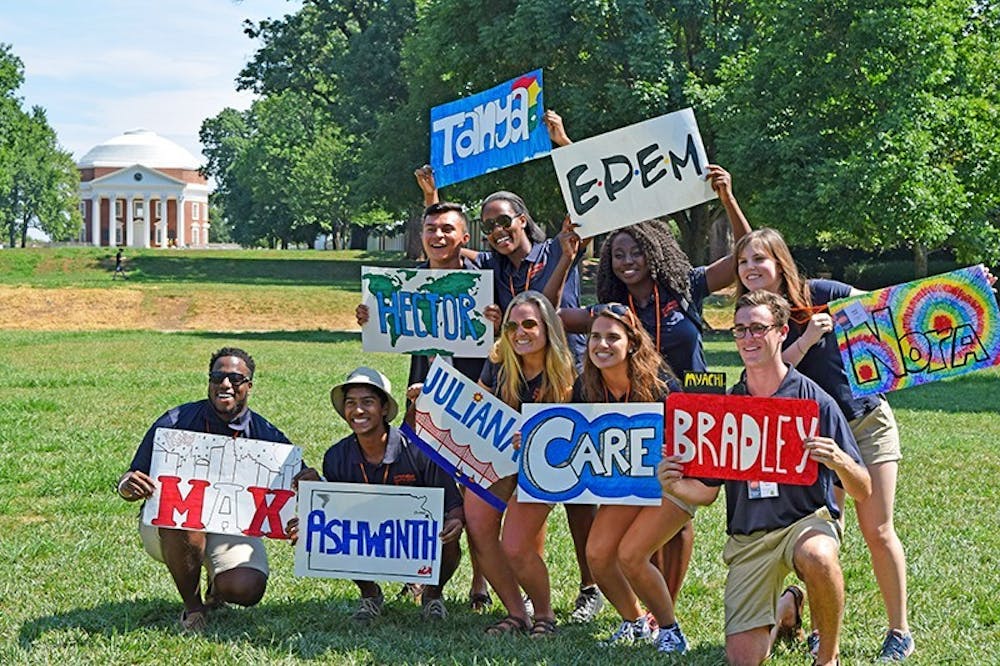Starting a new school is quite a universal experience. We’ve all been there — the nervous jitters on the first day, trying and failing not to get lost and attempting to orient ourselves to a new environment while surrounded by many new and unfamiliar people. Likely the last time most University students experienced this feeling was during First-Year Orientation. For those who handed in their last final in May, those feelings were probably a faint memory. However, these sentiments are more poignant and last much longer for transfer students, especially mid-year transfers. Mid-Year Orientation should be a more extensive program and include resources that meet transfer students’ specific needs.
I transferred to the University this spring from American University, making me a mid-year transfer student. Transferring to any college is a huge transition, but such struggles are exacerbated by the competitive social and academic culture of the University. In my experience, the University has done little to help. While COVID-19 squashed their in-person plans, Mid-Year Orientation has other issues separate from the pandemic. It fails to meet the unique needs of transfer students and ignores important social activities that might help new students meet their fellow transfer peers.
To start off, Mid-Year Orientation was only two hours long. While COVID-19 forced the University to move orientation online after a surge in cases, administration could have found more productive uses for this program. For example, facilitators spent a lot of time asking us to visualize what we liked about our previous institutions and what we wanted to get out of our University experience. In breakout groups, we discussed what we visualized and wrote notes on a PowerPoint. The most helpful part of the Zoom meeting was at the very end when we had a student panel.
We spent too much time with well-meaning but ultimately unhelpful visualization exercises. I left the meeting wondering a lot about student life. How do I use my meal plan? What are the best places to study on Grounds? How many organizations should I join? How do I deal with all the applications for them? I felt like we had been given a swim lesson but only taught how to kick — not how to use our arms to keep us afloat. And then we were thrown into the water.
Mid-Year Orientation was not the only program that proved to be unhelpful in my transition to life at the University. On the whole, I received little information that was useful. As a student in the College, I completed an orientation module on U.Va. Collab, but watching short videos on life at this school does little to actually prepare one for reality.
I think there are several things that the University could have done differently to better orientate mid-year transfers and help us get accustomed to life here. For one, orientation could be a longer process. Instead of just a few hours, several events and presentations spread across a few days could lead to stronger connections with other transfers and more in-depth knowledge of the ins and outs of University life. I know it’s not everyone’s favorite thing, but orientation can be helpful to alleviate some of the stresses that come with a transition like transferring to a new school. There’s certainly a lot more to life at the University than just two hours worth.
In addition, Transfer Student Peer Advisors would be a great resource for mid-year transfer students. For incoming transfer students in the fall, TSPAs are “enthusiastic, approachable, and knowledgeable about University resources,” according to the orientation website. They are a person to turn to when you have questions about anything related to the University. However, TSPAs are not provided for spring transfer students. This leaves us feeling like an afterthought. It is unclear why they are not provided, but I think TSPAs would be a great resource for us. Starting in the spring is arguably more confusing than starting in the fall, when first-years are also trying to acclimate themselves. TSPAs would help smooth the transition.
In short, this transition has been more of a sink or swim experience than I had anticipated, but I don’t think it has to be that way. The University has more than enough resources to make the transition smoother for mid-year transfers — it just needs to implement them. It should schedule a longer orientation with more events to increase in-person exposure to the University and everything it has to offer before classes start. TSPAs should be a resource available to all transfers, even the ones who enter during the spring semester. Implementation of these programs as part of the Mid-Year Orientation process would make the transition an easier, more gradual experience rather than one that throws transfer students in the pool.
Riley Lorgus is a Viewpoint Writer for The Cavalier Daily. They can be reached at opinion@cavalierdaily.com.
The opinions expressed in this column are not necessarily those of The Cavalier Daily. Columns represent the views of the authors alone.







